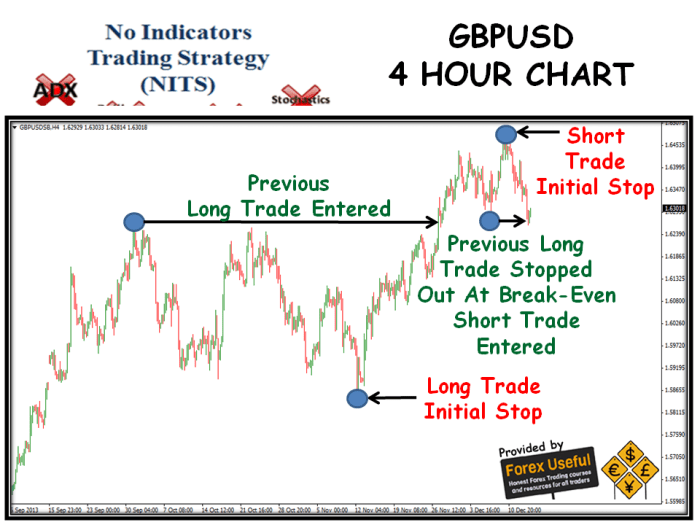The Stop Loss Strategy, a cornerstone of risk management in trading, empowers you to safeguard your portfolio and navigate market volatility with confidence. This strategy sets predefined exit points to minimize losses and preserve capital, ensuring you stay in control of your trades.
Delving into the nuances of stop loss strategies, we’ll explore their types, placement, execution, benefits, drawbacks, and implementation. By the end of this comprehensive guide, you’ll possess the knowledge and skills to harness the power of stop loss strategies for effective risk management.
Definition of Stop Loss Strategy

A stop loss strategy is a risk management technique used in trading to limit potential losses. It involves setting a specific price level at which an open position will be automatically closed, thereby preventing further losses beyond that point.
For example, if you buy a stock at $100 and set a stop loss order at $95, the order will be triggered and the stock will be sold automatically if its price falls to $95 or below.
The stop loss strategy is a risk management tool that helps traders limit their losses in the event of an unfavorable market movement.
By placing a stop loss order, traders can define a specific price level at which their position will be automatically closed, preventing further losses.
Understanding Forex candlestick patterns can be beneficial in identifying potential reversal or breakout points, which can inform the placement of stop loss orders. This integration of technical analysis with risk management enhances the effectiveness of the stop loss strategy.
Types of Stop Loss Strategies
- Fixed Stop Loss: A fixed stop loss order is placed at a specific price level and remains there until the order is triggered or canceled.
- Trailing Stop Loss: A trailing stop loss order moves dynamically as the price of the asset changes. It is typically set at a certain percentage or dollar amount below the current market price.
- Mental Stop Loss: A mental stop loss is a price level that a trader has in mind but does not place as an actual order. It serves as a psychological guide to exit a position if the price reaches that level.
Placement of Stop Loss Orders
The optimal placement of stop loss orders depends on factors such as risk tolerance, reward-to-risk ratio, and market volatility. Generally, stop loss orders should be placed:
- Below support levels or above resistance levels for long positions.
- Above support levels or below resistance levels for short positions.
- At a distance that provides an acceptable risk-to-reward ratio.
Execution of Stop Loss Orders
Stop loss orders can be executed using different methods:
- Market Order: A market order is executed immediately at the best available price.
- Limit Order: A limit order is executed only if the price reaches a specified level.
- Stop-Limit Order: A stop-limit order combines a stop order with a limit order. It is triggered like a stop order but is executed like a limit order.
Slippage and market volatility can impact stop loss execution, potentially resulting in a less favorable execution price than intended.
Benefits and Drawbacks of Stop Loss Strategies, Stop loss strategy
Benefits:
- Limits potential losses.
- Protects portfolio from large drawdowns.
- Provides peace of mind and allows traders to manage risk effectively.
Drawbacks:
- Can lead to premature exits if the market fluctuates.
- May limit profit potential if the stop loss is placed too close to the entry price.
- Can be ineffective in highly volatile markets.
Implementation in Trading Systems
Stop loss strategies can be incorporated into trading systems to automate the risk management process. This involves defining the stop loss parameters and the conditions under which they will be triggered.
Example: A hypothetical trading system might use a fixed stop loss of 5% below the entry price for long positions and a trailing stop loss of 3% below the highest price reached for short positions.
Comparison to Other Risk Management Techniques

Stop loss strategies can be compared to other risk management techniques such as position sizing and hedging:
| Technique | Description | Advantages | Disadvantages |
|---|---|---|---|
| Stop Loss | Sets a specific price level to close a position automatically, limiting potential losses. | Simple and effective, provides peace of mind. | Can lead to premature exits, may limit profit potential. |
| Position Sizing | Adjusts the number of shares or contracts traded based on risk tolerance and account size. | Allows for flexible risk management, can maximize profits in favorable markets. | Requires careful calculation and monitoring, can be difficult to implement effectively. |
| Hedging | Uses additional positions to offset the risk of another position. | Can provide protection against market fluctuations, reduces volatility. | Complex to implement, can be expensive, may limit profit potential. |
Final Thoughts: Stop Loss Strategy
In the dynamic world of trading, stop loss strategies stand as a testament to the importance of risk management. By implementing these strategies, you gain the ability to protect your hard-earned capital, limit losses, and maximize your chances of long-term success.
Embrace the Stop Loss Strategy as a cornerstone of your trading arsenal and empower yourself to navigate market fluctuations with confidence and resilience.
Implementing a Forex position trading strategy involves a comprehensive approach, including the strategic use of stop loss orders. These orders play a crucial role in limiting potential losses by automatically closing a position when the market moves against it.
Stop loss strategies, when combined with a sound understanding of market dynamics, can enhance the risk management aspect of Forex position trading, safeguarding capital and preserving profits.
Essential FAQs
What is the primary purpose of a stop loss strategy?
A stop loss strategy is a crucial component of Forex risk management , allowing traders to mitigate potential losses by automatically exiting positions when the market moves against them.
By setting a predefined stop loss level, traders can limit their exposure to adverse price fluctuations and protect their capital.
Implementing a stop loss strategy is essential for effective risk management and safeguarding trading accounts.
A stop loss strategy aims to minimize potential losses by automatically exiting a trade when the market price reaches a predetermined level.
How does a trailing stop loss strategy differ from a fixed stop loss strategy?
A trailing stop loss strategy adjusts its exit point dynamically as the market price moves favorably, while a fixed stop loss strategy maintains a static exit point.
What are the key factors to consider when determining the optimal placement of a stop loss order?
Risk tolerance, reward-to-risk ratio, and market volatility are crucial factors to assess when determining the appropriate placement of a stop loss order.




